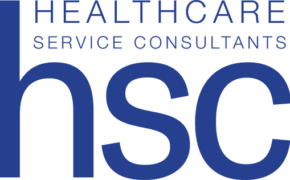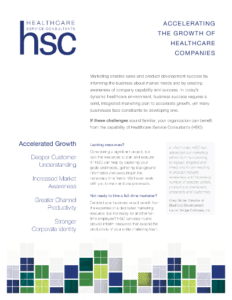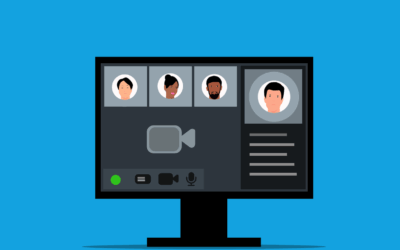
Email marketing is a proven tool in an overall content marketing strategy. It identifies prospects interested in learning more about your products and services. Email marketing is also perfect for:
- building brand awareness
- fostering engagement
- upselling to existing customers
- articulating value propositions
- distributing content (e-books, white papers)
- communicating company updates (press releases)
Here’s another fact. Email is the most frequently and consistently utilized form of digital communication. Ninety-nine percent of email users check their inboxes daily. Sometimes, up to 20 times or more!
In this blog, we’ll examine strategies and tactics for developing an effective email marketing strategy. This includes:
- content development
- email database management
- engagement reporting
Creating Great Email Marketing Content
Corporate-level email marketing provides cover for more personalized sales communications. It is an opportunity for the company to convey standardized messages. It also enables the sales force to amplify and customize messages according to the needs of individual prospects and customers.
It’s no secret healthcare executives and providers are time-constrained. They scrutinize their inboxes daily (often on their smartphones) to determine which emails warrant their attention. The rest? Often immediately relegated to the trash bin. To get past these filters, it is necessary to develop email content that captures and retains the attention of every buyer persona.
These best practices can help:
- Subject Line Hook: Ensure the subject line contains keywords that will best capture your target audience’s attention. Front-load keywords so they stand out and capture the reader’s attention at a glance.
- Body Content: In healthcare IT, the objective is to drive readers to your website to learn more. Content must be educational and interesting to spark reader curiosity. It should also be concise so readers can quickly gauge their interest.
- Singular vs. Multiple Topics: Singularly focused emails are short and attention grabbing. These are useful when there is a single call to action, such as booking a meeting at a tradeshow. Conversely, newsletter-style emails with multiple content blocks are effective for sharing different types of information that might appeal to a variety of healthcare IT stakeholders. This might include summarizing white paper content from clinical, operational, and technical perspectives. Or, promoting pieces of content that appeal to buyers at different stages in the buyer journey.
- Frequency: Sending emails on a regular basis (every 4–6 weeks) increases their effectiveness. Be sure to align your email schedule with your content and campaign strategies. This helps determine an appropriate cadence and ensures you have something new to say in each email… whether it’s a news release, product announcement, event, or sharing a new piece of content.
Building an Email Marketing Database
It can be tempting to purchase a curated email database. But, the best place to start is with your own customer relationship management (CRM) platform. If optimized for lead generation, it will contain:
- valuable contact information about your existing customer base
- prospects that the sales team is working on nurturing
- leads captured through website landing pages and tradeshow events
To grow your distribution list, consider collecting email contacts through:
- blog subscriptions
- website contact forms
- gated content on your website
Whether your contacts come from your CRM or a curated list, the most effective email campaigns segment contacts and tailor content according to:
- customer status—existing up-sell opportunity vs. new customer acquisition
- persona profile—e.g. physicians vs. administrators
- phase in the buying journey—e.g. awareness vs. decision
When it comes to unsolicited emails, be sure to align email content with the unique needs and pain points of your target audience. Sending irrelevant content in a “shotgun” approach is not only annoying but could result in flagging future emails as spam.
Engagement Reporting
Tracking email recipient engagement is key to a successful email marketing campaign. This can be as simple as reporting upon who opened your emails. Or, monitoring by-the-click behavior to track individual recipient interests and behaviors. The objectives of tracking are twofold. First, to assess and optimize the effectiveness of your email content, structure, and frequency. Then, ultimately to identify interest in your content.
Once proper tracking and reporting are in place, it is essential to build sales processes that facilitate a timely hand-off of marketing-qualified leads to the sales team. The team should know what leads clicked on (aka what was interesting). In healthcare IT, this context is important for framing the prospect’s areas of interest. Then, the sales team can tailor their follow-up conversation and advance the sales process.
Integrating Email into Your Content Marketing Strategy
Email marketing is a highly-effective, low-cost method for promoting and distributing content, and communicating company messaging, news, product releases, events, and new educational content to both customers and prospects. To be most effective, email strategies should align with the educational strategy of a content marketing effort and incorporate tracking and reporting mechanisms that capture leads and facilitate hand-off to your sales team.
Our team of healthcare IT product marketing experts have significant experience creating and executing email marketing strategies and campaigns that build awareness and generate engagement across your target audiences. We can help you develop an email strategy that leverages your content marketing efforts and helps build your sales funnel. Contact us to learn more.




